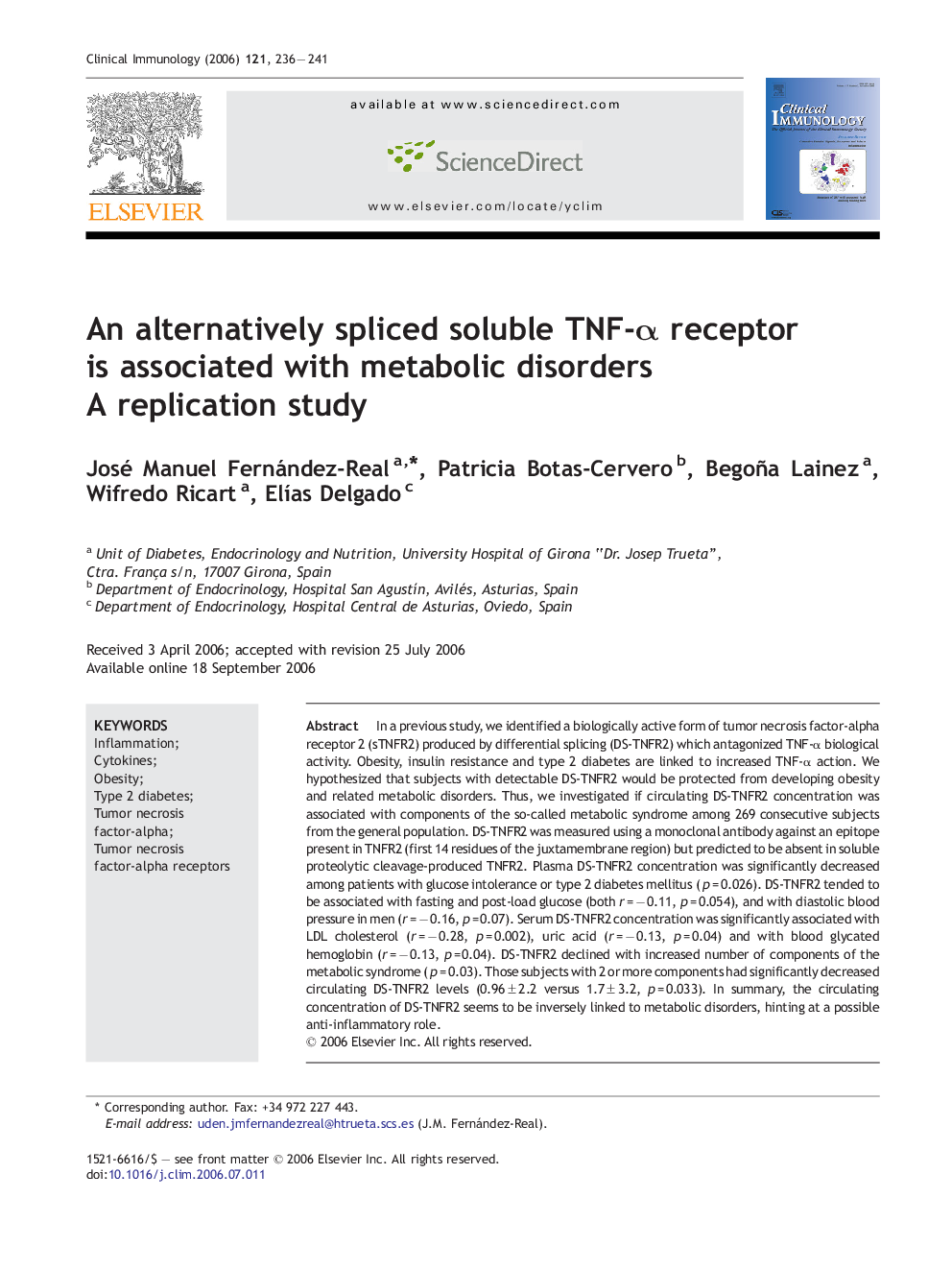| کد مقاله | کد نشریه | سال انتشار | مقاله انگلیسی | نسخه تمام متن |
|---|---|---|---|---|
| 3258534 | 1207460 | 2006 | 6 صفحه PDF | دانلود رایگان |

In a previous study, we identified a biologically active form of tumor necrosis factor-alpha receptor 2 (sTNFR2) produced by differential splicing (DS-TNFR2) which antagonized TNF-α biological activity. Obesity, insulin resistance and type 2 diabetes are linked to increased TNF-α action. We hypothesized that subjects with detectable DS-TNFR2 would be protected from developing obesity and related metabolic disorders. Thus, we investigated if circulating DS-TNFR2 concentration was associated with components of the so-called metabolic syndrome among 269 consecutive subjects from the general population. DS-TNFR2 was measured using a monoclonal antibody against an epitope present in TNFR2 (first 14 residues of the juxtamembrane region) but predicted to be absent in soluble proteolytic cleavage-produced TNFR2. Plasma DS-TNFR2 concentration was significantly decreased among patients with glucose intolerance or type 2 diabetes mellitus (p = 0.026). DS-TNFR2 tended to be associated with fasting and post-load glucose (both r = − 0.11, p = 0.054), and with diastolic blood pressure in men (r = − 0.16, p = 0.07). Serum DS-TNFR2 concentration was significantly associated with LDL cholesterol (r = − 0.28, p = 0.002), uric acid (r = − 0.13, p = 0.04) and with blood glycated hemoglobin (r = − 0.13, p = 0.04). DS-TNFR2 declined with increased number of components of the metabolic syndrome (p = 0.03). Those subjects with 2 or more components had significantly decreased circulating DS-TNFR2 levels (0.96 ± 2.2 versus 1.7 ± 3.2, p = 0.033). In summary, the circulating concentration of DS-TNFR2 seems to be inversely linked to metabolic disorders, hinting at a possible anti-inflammatory role.
Journal: Clinical Immunology - Volume 121, Issue 2, November 2006, Pages 236–241